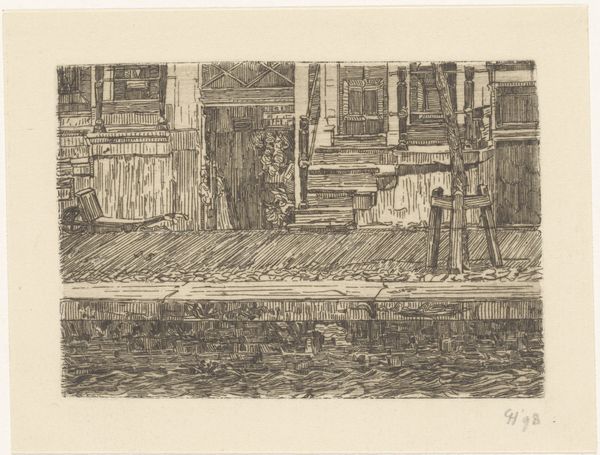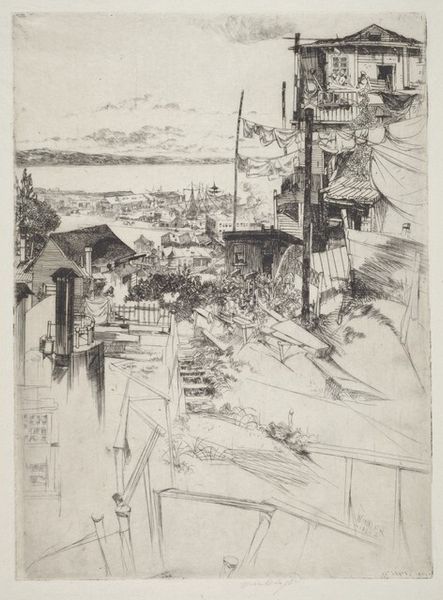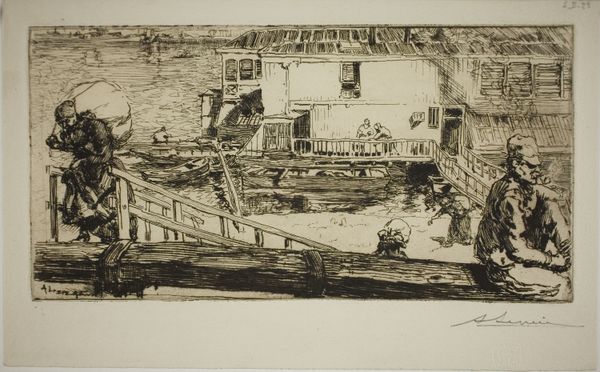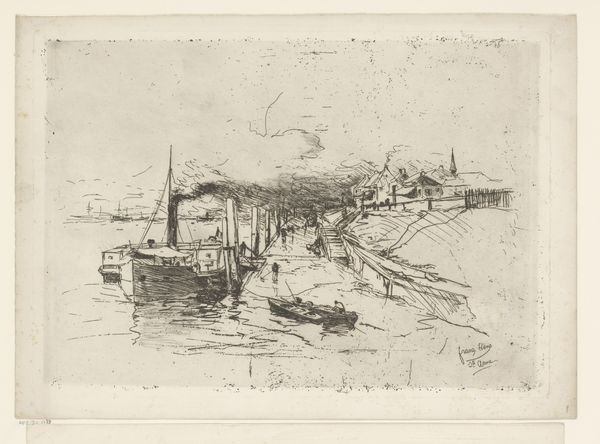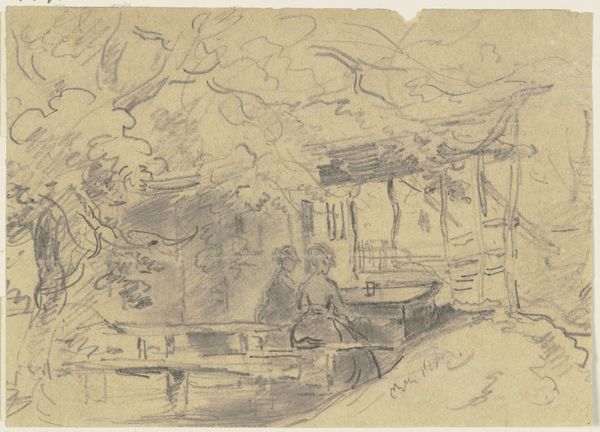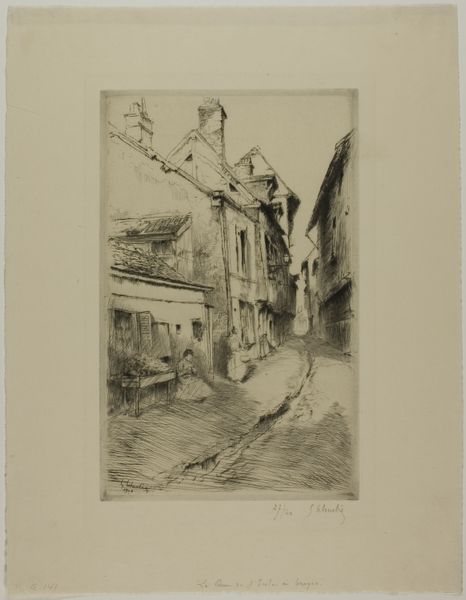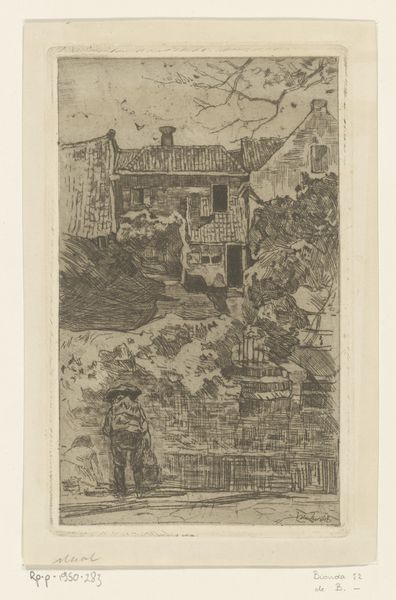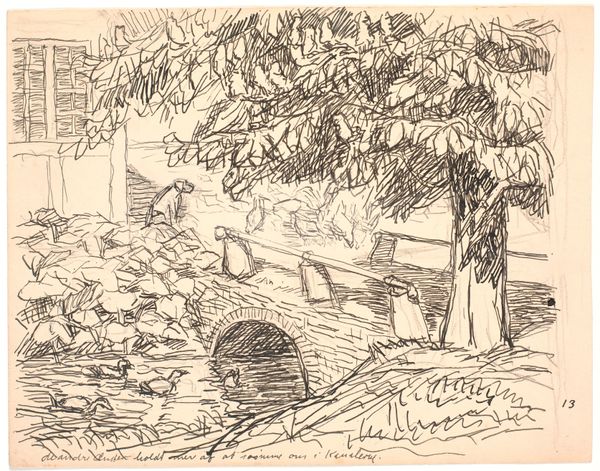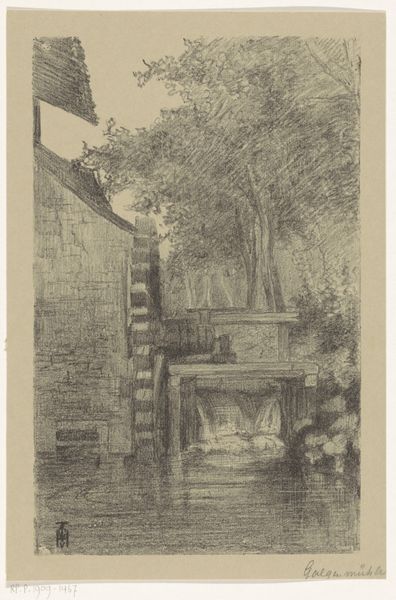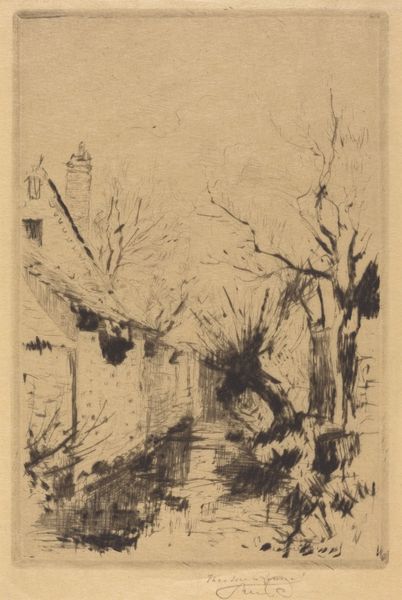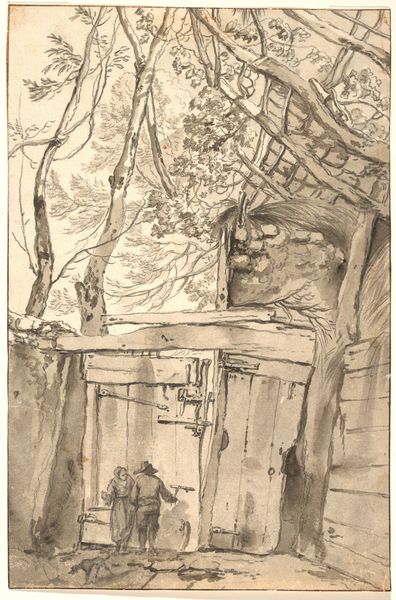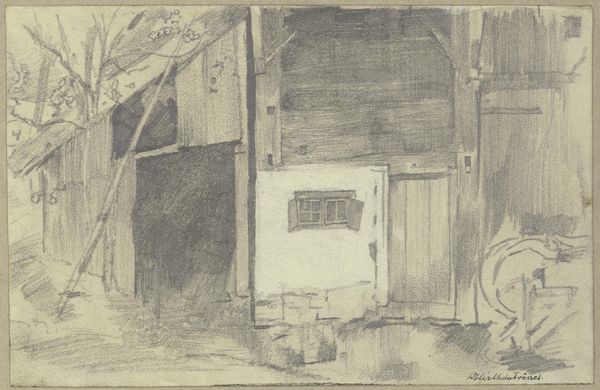
drawing, print, etching, ink
#
drawing
# print
#
etching
#
landscape
#
ink
#
cityscape
#
modernism
#
realism
Dimensions: plate: 15.88 x 11.43 cm (6 1/4 x 4 1/2 in.) sheet: 24.77 x 18.1 cm (9 3/4 x 7 1/8 in.)
Copyright: National Gallery of Art: CC0 1.0
Curator: I'd like to draw our visitor's attention to John Taylor Arms' etching, "La Chiesa, Borgio" from 1926. What's your immediate take on it? Editor: I am struck by the melancholic stillness captured in this scene. The use of delicate lines creates a textural richness in the stone, wood and peeling walls, highlighting themes of ruin and decay. It's as if time itself is etched into the very surface. Curator: Absolutely. Arms was a master etcher, renowned for his technical precision. He made the plates himself, you know. Looking closely, you'll observe how the network of cross-hatching builds volume. It reminds me of architectural renderings, speaking to his background in engineering and his fascination with craft. The controlled strokes and choice of etching demonstrate Arms' ability to harness materiality in expressing detailed, tangible urban decay. Editor: The composition draws my eye upward. The artist directs our gaze through layers of architectural elements toward the dome and crosses, thus reinforcing their structural function in a divine structure of a traditional social space. He almost traps the viewer in this urban decline while subtly elevating one's eyes to find spiritual freedom and the only pristine structural integrity, as demonstrated by the architectural shapes of the dome. Curator: What does this decayed cityscape evoke for you, then, as a structure? Is it strictly metaphorical? Editor: Not just a metaphor, I would argue. The etching foregrounds material transformations due to age and weather, revealing an intricate display of how structures simultaneously exist in a state of constant making and unmaking. I believe that his labor focused primarily on a specific type of built structure reveals social issues, perhaps in a particular type of making, perhaps issues like worker exploitation. This labor resulted in grand building but under what conditions and by whom? Curator: It is really intriguing how you can link Arms' deliberate printmaking with issues in traditional architectural projects. To consider the physical demands required to produce it, you also allow viewers to meditate upon broader labor relations and the built structure's significance to spiritual communities. I find that quite refreshing. Editor: Indeed. Considering the socio-economic history as expressed in this work provides us with fresh opportunities to investigate beyond art.
Comments
No comments
Be the first to comment and join the conversation on the ultimate creative platform.
